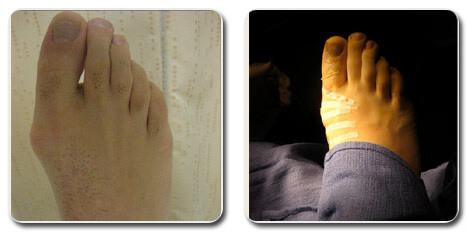How to Make Wearing Shoes Comfortable with Bunions
At some point in our lives, most of us will experience bunions. They can be extremely painful and make it difficult to find comfortable shoes. But fear not, we are here to help. In this article, we will provide you with some tips on how to make wearing shoes comfortable with bunions.
What are Bunions?
Bunions are a bony bump that forms on the joint at the base of your big toe. They develop when your big toe pushes against your next toe, forcing the joint of your big toe to get bigger and stick out. Bunions can be hereditary, but they can also be caused by wearing tight shoes, high heels, or shoes that are too narrow. Women are more likely to get bunions than men because they tend to wear high heels and tight shoes.
Wearing Comfortable Shoes
The first step in making shoes comfortable with bunions is to choose the right shoes. Look for shoes that have a wide toe box and are made of soft, stretchy material. Shoes that have a low heel and good arch support can also be helpful. Avoid shoes that have pointed toes, high heels, or are too tight.
Orthotic Inserts
Orthotic inserts are a great way to make shoes more comfortable with bunions. They can help redistribute pressure away from the bunion and provide additional support to the arch of your foot. You can purchase over-the-counter inserts or have custom-made inserts made by a podiatrist.
Stretching Exercises
Stretching exercises can also help alleviate bunion pain. Toe stretching exercises can help to stretch out the muscles and tendons in your toes and foot. One such exercise involves placing a towel on the ground and picking it up with your toes. You can also stretch your toes by using your hands to gently pull them back and forth.
Ice and Heat Therapy
Applying ice or heat to your bunion can help to reduce inflammation and alleviate pain. You can use a cold compress or frozen vegetables wrapped in a towel for ice therapy. Heat therapy can be done by placing a warm towel or heating pad on your bunion.
Pain Medication
If your bunion pain is severe, you may need to take pain medication. Over-the-counter pain medication like ibuprofen can be helpful in reducing pain and inflammation. If your pain is severe, your doctor may prescribe stronger medication.
Surgery
In some cases, surgery may be necessary to correct a bunion. If your bunion is causing severe pain and other treatments have not been successful, your doctor may recommend surgery. During the surgery, the bunion will be removed, and the bones in your toe will be realigned.
Conclusion
In conclusion, bunions can be extremely painful, but there are ways to make wearing shoes comfortable. Choosing the right shoes, using orthotic inserts, stretching exercises, ice and heat therapy, pain medication, and surgery are all options that can help alleviate bunion pain. If you are experiencing bunion pain, it is important to talk to your doctor to determine the best course of treatment for you.
See Also:


Nhận xét
Đăng nhận xét